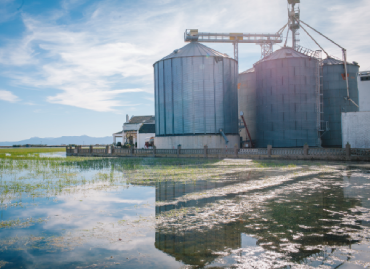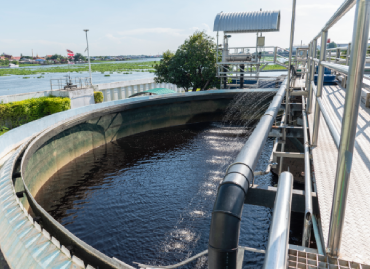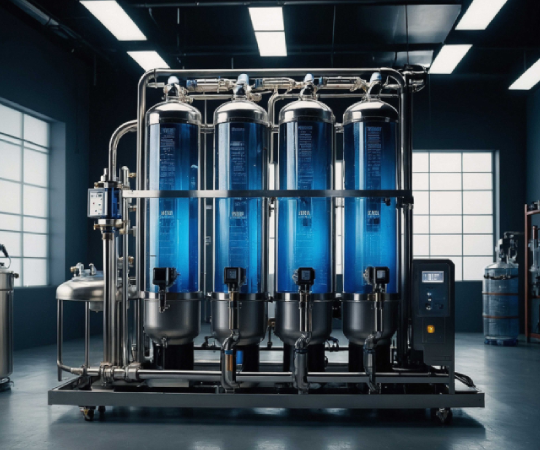- By Admin
- 18 Sep 2025
- ETP Plant
Comprehensive Solutions for Mining Water and Wastewater Treatment Challenges
Mining is a foundational industry in India, vital for economic growth by supplying minerals such as coal, iron ore, and limestone. Maharashtra, though not the largest mining state, plays an important role with its manganese, coal, and limestone reserves concentrated in districts like Chandrapur and Nagpur.
Water is indispensable throughout mining—from cooling drilling equipment and controlling dust to processing ores and maintaining sanitation at worker camps. A reliable and consistent water supply is critical; without it, operations can face costly interruptions. Thus, managing water effectively is not only a practical necessity but also a regulatory and environmental imperative.
"In mining, water is as essential as machinery. Managing water wisely—through treatment and reuse—is key to operational continuity, environmental protection, and long-term sustainability. Without responsible water stewardship, the industry risks both ecological damage and operational disruptions, making water management a critical cornerstone of modern mining."
Sources and Characteristics of Mining Wastewater
Mining wastewater is generated from multiple activities, making it complex and challenging to treat. Drilling and blasting produce slurry contaminated with rock particles and chemical additives. Ore processing, particularly flotation and leaching, results in wastewater loaded with acidic or alkaline compounds and heavy metals like mercury and arsenic. Worker camps contribute domestic wastewater, including sewage and greywater. Surface runoff during rain further exacerbates pollution by washing sediments and contaminants into nearby water bodies. This mixture of solids, oils, acids, metals, and hazardous chemicals poses significant risks to ecosystems and groundwater if discharged untreated.


Treatment Methods for Mining Wastewater
Mining wastewater treatment typically involves several stages designed to address different contaminants. Sedimentation tanks are used first to settle heavy solids out of the effluent. Acidic waters, often resulting from acid mine drainage, are neutralised using lime or other alkaline agents to restore safe pH levels. Coagulation and flocculation processes then aggregate suspended particles, which are removed by filtration through sand beds or activated carbon. Chemical treatments target heavy metals, reducing their concentration to acceptable limits. In some mines, biological treatment methods such as constructed wetlands or bioreactors break down organic pollutants further, ensuring the treated water meets environmental standards before reuse or discharge.
Advanced Technologies Enhancing Water Reuse
To minimise freshwater withdrawal and reduce pollution, mining companies increasingly employ advanced water treatment technologies. Membrane processes like Reverse Osmosis (RO) and Ultrafiltration (UF) enable the recovery of high-quality water from complex effluents. Zero Liquid Discharge (ZLD) systems aim to eliminate wastewater discharge, facilitating total water recycling within the mine. Automation and real-time monitoring systems enhance these processes by providing continuous water quality data and optimising treatment performance. Innovations in tailings management also contribute to water conservation by reducing losses during mineral waste storage. These technologies are vital for balancing operational efficiency with environmental stewardship.
Tailored Water Treatment Solutions for Mining
Meeting the diverse and demanding water treatment needs of mining requires customised solutions. Our expertise includes designing and installing Effluent Treatment Plants (ETPs), Sewage Treatment Plants (STPs), Water Treatment Plants (WTPs), and RO systems that handle mining wastewater's unique composition. We conduct comprehensive site assessments and engineer systems to maximise water reuse, reduce costs, and ensure compliance with environmental regulations. Incorporating IoT-enabled automation and monitoring, our solutions provide transparency and operational control, helping mines—from open-pit coal extraction to mineral processing—to maintain sustainable water management practices while optimising productivity.
Summary And Conclusion
Mining operations depend heavily on water, producing complex wastewater streams that require specialised treatment. Through multi-step processes including sedimentation, neutralisation, filtration, and biological therapies, mining wastewater can be effectively managed to reduce environmental harm. The adoption of advanced technologies such as Reverse Osmosis, Ultrafiltration, and Zero Liquid Discharge systems has enhanced water reuse and minimised freshwater demand. Tailored, automated treatment systems ensure operational reliability, environmental compliance, and cost efficiency. By embracing comprehensive water and wastewater management strategies, the mining industry can sustain growth while protecting vital water resources and adhering to stringent environmental norms.































































